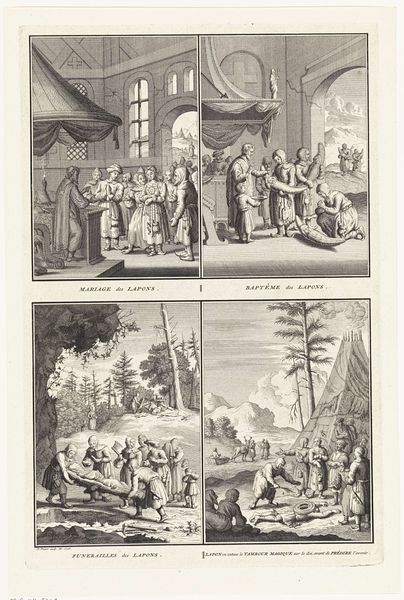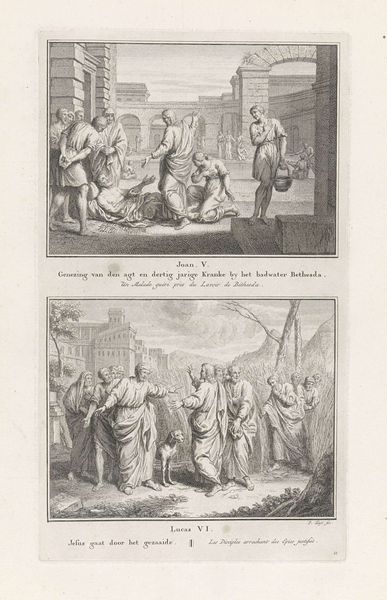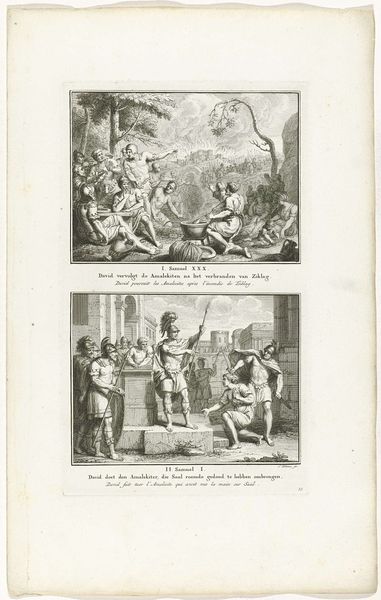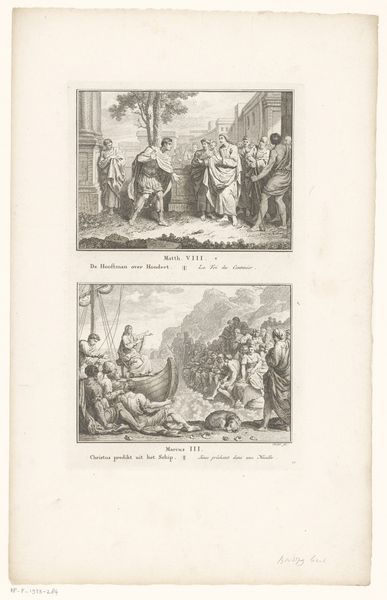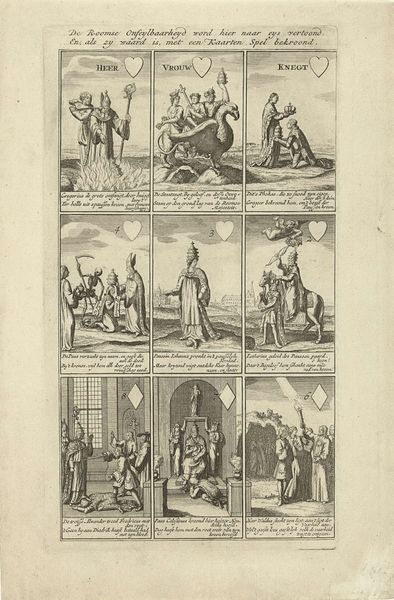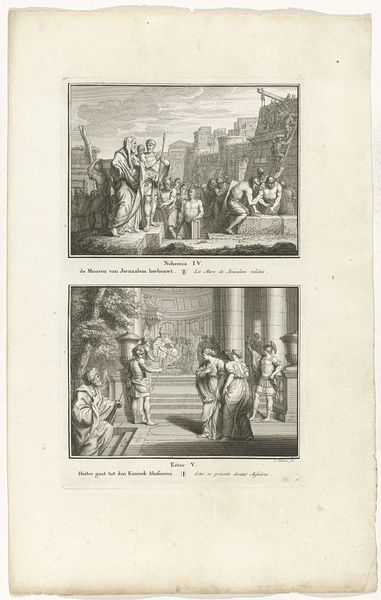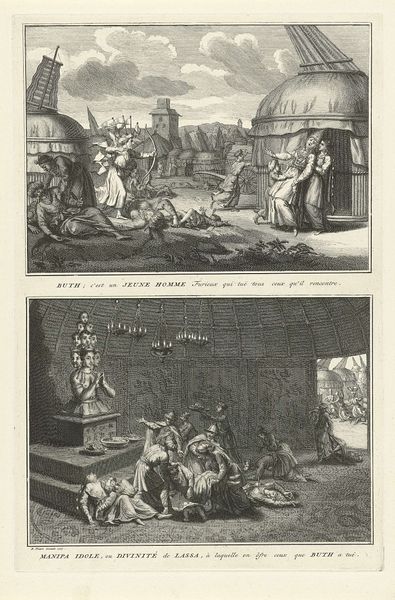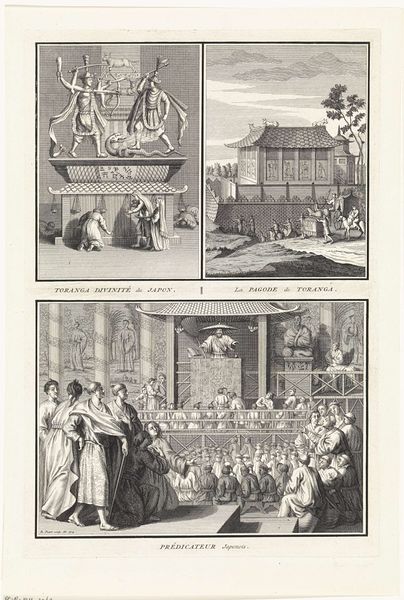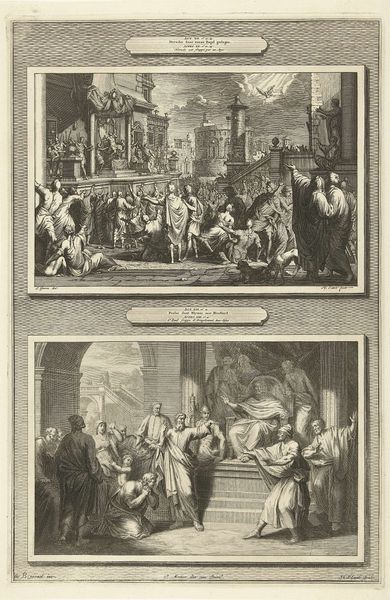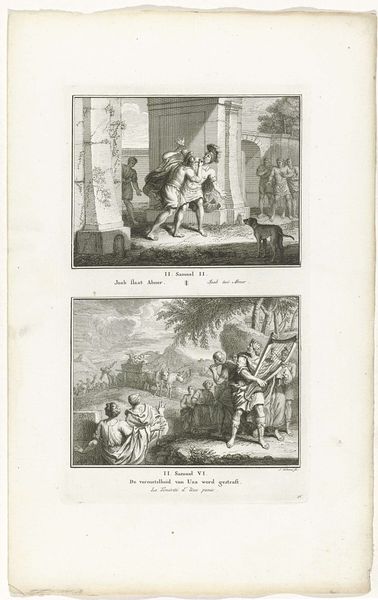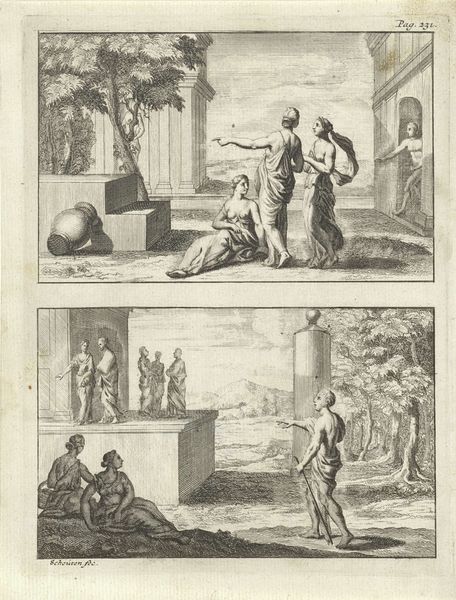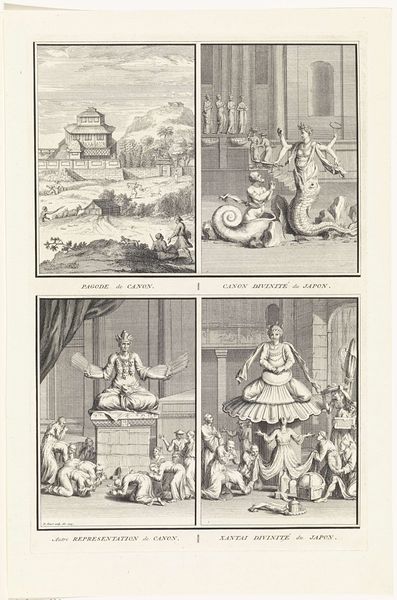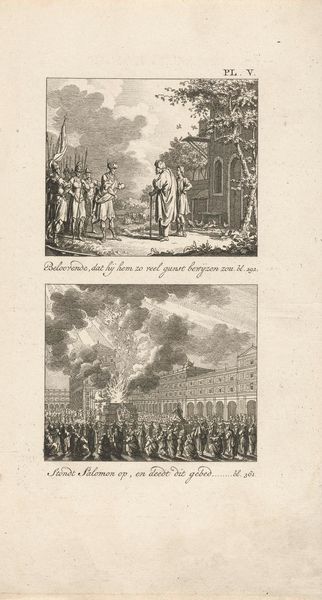
print, engraving
#
baroque
# print
#
history-painting
#
engraving
Dimensions: height 335 mm, width 218 mm
Copyright: Rijks Museum: Open Domain
This print, made by Bernard Picart around the early 18th century, depicts Japanese gods and their worship, offering a glimpse into how the West perceived Eastern spirituality. The multi-armed deity immediately catches the eye, a symbol resonating across cultures. We see echoes of this motif in Hindu art, with gods like Shiva embodying power and omnipresence through multiple limbs. Yet, here, the context shifts. This figure stands over a prostrate figure. It evokes a powerful, perhaps unsettling, dynamic of authority and submission. Consider how gestures evolve. The act of kneeling, seen here in reverence before Amida, appears in countless religious traditions, from Christianity to Buddhism. It signifies humility, devotion, and the acknowledgment of a higher power. Such recurring motifs reveal a deep-seated human need to connect with the divine, expressed through shared physical and symbolic languages. The cyclical, non-linear progression of symbols is fascinating as they resurface, evolve, and take on new meanings.
Comments
No comments
Be the first to comment and join the conversation on the ultimate creative platform.
